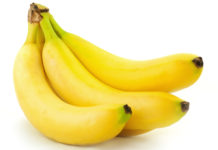Okra Plants are grown for their edible seed pods, a handsome plant to have in the vegetable garden. It has showy pale yellow flowers with red centers not unlike a hollyhock. Okra haters are not impressed by this. They claim that the pods are prickly on the outside and slimy on the inside and that if they want showy flowers they can grow petunias.
Okra lovers, most of whom live below the Mason-Dixon line, point out that modern “spineless” varieties aren’t prickly at all and that the viscous inside is the magic ingredient that thickens a good gumbo hearty stew. “Gumbo” is also another name for the plant itself.
Okra is popular in the south because it is a warm-weather crop that won’t bolt yellow, die, or otherwise misbehave in midsummer. It just gets taller, lusher, and more productive. It is a little hard to get started up north but redeems itself by being, unlike eggplant, a fast-maturing crop once warm weather settles in.
So even if you don’t plant until late June, you can still pick okra two months later if you urge it along a little. You only need a few plants for the home garden, though any extras can be frozen sliced, or whole. Dwarf varieties are available for small spaces. It is disease-free and rarely decimated by bugs.
The Colombian native tropical plant Anthurim like a lily flower is an epiphytic plant having 6 ft. leaves feast your guests with its magical and mesmerizing flowers. Check Anthurium Veitchii metallic dark green shinning plant they grow best in bright indirect sunlight and are very easy to care for.
Choose a site for Okra
Select a sunny site where the ground will warm up quickly or even raised beds in the north. The more okra you want to eat or freeze, the more space you require. The first time you grow it, start with 6 plants in an area of about 40 square feet. You might put an early lettuce crop in with it. But otherwise, assign the full plot to okra for the season. If you grow it each year, rotate the crop.
Soil for Okra
Okra prefers a light, well-drained loam with plenty of organic matter. Avoid heavy soils that warm up slowly especially up north. A pH of 6.0 to 7.0 is best and moderately high infertility. It is suggested a healthy shovelful of compost or aged manure be worked into each planting hole.
Planting Okra
Buy a new seed each year and speed up the normally slow germination process by soaking or freezing the seeds overnight or nicking the seed coat with a file. Wherever you live, make sure that the weather is consistently above 60 degrees and not too wet when you sow. The seeds will just sit and rot in cold, wet soil. In the north start them a month or two earlier indoors in peat pots.
Sown outdoors, seeds should be planted an inch deep in hills or rows and thinned to at least 18 inches apart. Bear in mind that the plants get tall 5 to 6 feet in warm climates. Dwarf varieties that grow to 3 to 4 feet are more convenient for the home garden. In the north space them far enough apart so that the sun can shine on all the pods to ripen them. Make sure to plant either 18 inches apart with 3 feet between rows or on a grid with plants two and a half feet apart from each way a little closer for dwarf kinds.
Growing Okra
It is important not to let growth lapse. Gardeners use numerous warm-up devices to bring the young plants along if its chilly raised beds, hot caps, grow tunnels, portable cold frames, and sheets of the black plastic slit to allow the plants to grow up. Keep plants well-watered if it is dry. Mulch is a good idea. And top-dress every few weeks with a balanced liquid fertilizer.
Pets and Diseases to Okra
So use the collars around transplanted seedlings to protect against cutworms. Occasional pests such as corn earworms cabbage, loopers, and stinkbugs can be picked off. Aphids and flea beetles can be knocked off with a hose. Diseases such as fusarium wilt and verticillium wilt are best dealt with by crop rotation.
How to Harvest Okra?
Okra pods are ready for picking several days after the flowers drop but before they’re fully mature. If you wait until the pods reach full size, they’ll be tough. The stems should still be soft and easy to cut, the pods 2 to 3 inches long. Some varieties can be picked at about 4 to 5 inches.
When the plant is in full production it requires to be picked every other day. If some pods have gone too far, pick them anyway and feed them to whatever will eat them, even if it’s the compost pile or the garbage can.
Otherwise, the Okra Plants will stop producing. Use gloves when you pick if your skin is sensitive to the prickles on the pods. Okra plants, if picked regularly, will continue to produce until frost. In the south growers sometimes cut the plants back almost to ground level in midsummer, top-dress them, and let them re-sprout for a whole second crop.
Varieties of Okra Plants
Okra Plants good varieties are “Clemson Spineless” the old standby, and “Clemson 80” an earlier, more productive version. “Emerald” is a tall, spineless, very productive variety. “Annie Oakley” is a tall early producer. “Dwarf Green Long Pod” is a good short variety. “Blondy, an All-America selection, is short and bushy with light green pods. “Red Okra” has red pods; white velvet has white.







